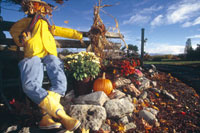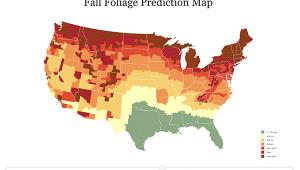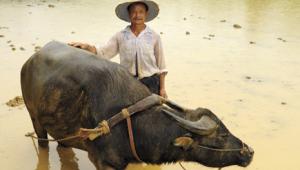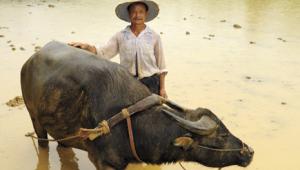Fall Colors
10 Tips For Capturing The Essence Of Autumn
As the last days of summer give way to frosty nights and crisp mornings, the world is transformed into a fiery splendor. In most parts of the US and Canada, crimson maples, golden poplars or aspen, and red dogwoods dominate the landscape. This is a time of transition, the last few weeks before November winds sweep away the foliage, signaling that winter is not far behind. In this glorious period of the year, the hills are ablaze with color attracting "leaf peepers" and photography buffs alike. Those who merely want to view autumn's finery are easily impressed, but we need to work harder to make visually satisfying images. If you want to capture the full impact of nature's spectacle and the other symbols of the season, consider some of the following tips. 1. Exploit The Light. In October, dawn comes late and the sun sets before dinner time, so most anyone can work in glorious, low-angled light. Take advantage of the warm and mellow illumination of early morning or late afternoon to enhance the earth tones of autumn. On cloudy days, consider fill flash for nearby subjects: to add a sparkle to an intimate scene or still life composition. Keep the effect subtle to avoid overpowering ambient light, however. |
|||
Don't stay indoors on days with gentle rain or mist; either can add an ambience which helps define this season. Use a large ZipLock bag to protect camera and lens from moisture. While sunny days are great for certain types of photography, cloudy/bright conditions are preferable in autumn. When the light is soft and uniform, contrast is subdued; shadows become less dominant and highlights more gentle. Now, the hues and tones will reproduce with greater richness, because there's not harsh light to bleach out the subtlety. 2. Use A Polarizer. The single most useful filter, a polarizer restores the richness of colors by wiping glare from reflective surfaces such as foliage. Especially after rain, it will enhance the vibrancy of bold hues. But this filter is also useful when foliage is dry: in harsh light when glare is most problematic and on gray, overcast days. By wiping the reflection of a leaden sky from the leaves, the polarizer will replace muddy colors with clean tones. |
|||
3. Warm The Scene. A "warm-tone" polarizer--with built-in warming effect--is particularly useful when the color of the light is bluish or "cool." This occurs between 10am and 3pm and also in cloudy conditions or at high elevations. Because a polarizer has little effect at certain angles to the sun, you'll want to carry a regular warming filter to block out the bluish light. The pale amber 81A is most commonly used to accentuate the warm tones. However, some photographers prefer the more subtle effect produced by the Tiffen 812. The latter combines a pink and very light amber tone and can be used anytime; however, in very cool light, an 81A or darker 81B might be preferable. 4. Consider An Enhancing Filter. Several manufacturers offer filters that enhance all colors in the red spectrum, intensifying reds, yellows, oranges, and browns. However, most also add a magenta caste; if you don't find this pleasing, look for a brand (such as Singh-Ray) that advertises a neutral effect. I find enhancing filters most useful in late autumn when the most striking colors have been replaced by rust tones. Then, the intensified rendition can be pleasing but do shoot each scene with and without the filter; it's difficult to know in advance which you are likely to prefer in any given situation. Avoid combining an enhancer and a polarizer, because the results will be garish, at best. |
|||
5. Select The "Right" Film. There's a lot of subjective judgment involved in film selection, too. Some demand the boldest, most saturated color rendition while others shun this effect as "exaggerated and unreal." The difference in rendition is most obvious with slide films. In general, you'll get the most "punchy" colors with Fujichrome Velvia and Ektachrome E100VS or Elite Chrome 100EC. Photographers who prefer a much more neutral effect, might consider Kodachrome 64 or Ektachrome 100 and 100 Plus Professional. The other slide films such as most Fujichromes and Ektachromes produce a vivid (but not amplified) color saturation. 6. Try Longer Lenses. Wide and ultra-wide angle lenses can be useful when you want to include several important components of a scene: an entire stone church, framed by foliage and blue sky, for example. Even then, the effect may be more pleasing with a 70-210mm zoom when you can back up far enough to take advantage of the apparent compression of elements in the scene. In other situations, try an even longer focal length to "dissect" an expansive view into smaller sections. Called "abstracting," I find this technique helps me to view a scene selectively, recording those parts of the whole which best express my emotional response to the location. It is also useful for excluding a cluttered foreground, a bald sky, or anything that interferes with a close appreciation of detail. |
|||
7. Work The Subject. All too often I see people stopping their cars and snapping a few shots of an incredible scene rich with potential. Then they quickly drive off. Granted, it's easy to fall into a point-and-shoot mode when confronted by majestic foliage. In such situations, we all need to think consciously to avoid rushing or burning film at a high rate. Explore the area from a variety of angles, both high and low; find the optimum combination of lighting, composition, and subject matter. Seek out a unique viewpoint that will best convey your intention to the viewer. Longer lenses plus selective vision can be useful here for presenting a single message. Regardless of equipment or technique, try isolating a dominant component, with supporting elements balanced around the center of interest. The results should be pleasing, no matter what type of subject--from freshly picked apples on a roughly-hewn bench, to riders on palominos against a softly blurred backdrop of hills draped in colors muted by haze. |
|||
Other great subjects worth visually exploring--depending on the geographic location--a white church steeple surrounded by hills garbed in crimson and a brightly painted covered bridge competing for attention with nature's finery. On breezy days, try some long (1/15 sec) exposures to blur wind-blown foliage to reproduce for ambience of a blustery October day. Combine thoughtful technique with an appreciation for composition and the quality of light; now you'll have the recipe for the most compelling pictures of the season. 8. Find Symbols Of Nostalgia. Certain subjects tend to communicate a feeling or atmosphere. In autumn these might include tranquillity or loneliness and especially nostalgia: a reminiscence of the past evoked by various symbols. Whenever possible, I'll get off the highways and take the long way to my destination. Here, I may find battered farm wagons, a dilapidated barn, sheaves of corn stalks, a tattered scarecrow guarding a field of stubble, or the overgrown headstones at an abandoned cemetery shrouded in mist. On weekends, I'll get up early to seek out rural subjects, sometimes at a reconstructed pioneer village decorated for the season for a dose of nostalgia. Costumed interpreters preparing a Thanksgiving feast, pumpkin pies cooling on a windowsill, and a horse drawn plough readying the earth for winter are but a few of the possibilities. Then I'll record backlit sheep grazing among fallen leaves or focus on leaves swirling around the artifacts of a bygone era. 9. Record The Joy. Ironically, October also brings a time of joy, of giving thanks for the bountiful harvest. In fact, I have encountered even more symbols representative of this facet of the season. Bushel baskets brimming with squash, gourds, and related vegetables, amber sheaves of wheat glowing at sunrise, and old-fashioned haystacks in Mennonite or Amish country, are but some of the irresistible subjects. In villages, I'll stop to photograph the general store displaying the wealth of the harvest and ears of Indian corn adorning a front door. Other subjects that evoke the spirit of the season include farmers displaying their fall produce at an outdoor market, a family carving jack-o'-lanterns, children frolicking among piles of leaves, teens enjoying a hay ride, and the Halloween antics of costumed revelers. 10. Avoid The Masses. While not all areas of North America receive a bounty of fall color, the majority of Shutterbug readers reside within a day's drive of some changing foliage. If you cannot make it for the peak of the season, take a trip a week later. You'll miss the heavy crowds and traffic jams. Then the more subdued atmosphere will present opportunities not yet available when the area is ablaze with the more vivid colors. The emotional appeal of this edge of the season can make for more subtle but equally interesting images, too, especially of the symbols depicting the final days of faded glory. |























































